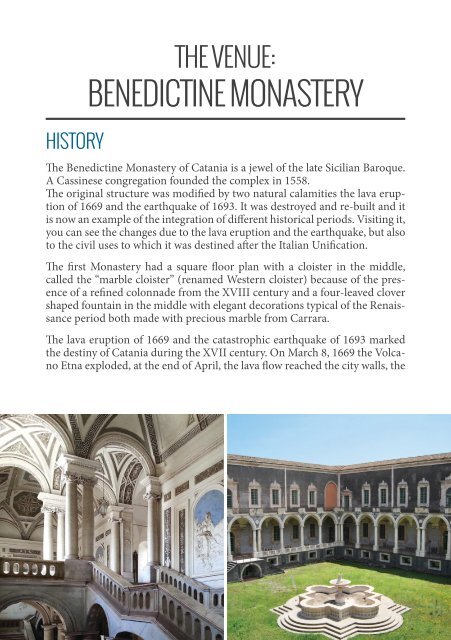pieghevole
You also want an ePaper? Increase the reach of your titles
YUMPU automatically turns print PDFs into web optimized ePapers that Google loves.
HISTORY<br />
THE VENUE:<br />
BENEDICTINE MONASTERY<br />
The Benedictine Monastery of Catania is a jewel of the late Sicilian Baroque.<br />
A Cassinese congregation founded the complex in 1558.<br />
The original structure was modified by two natural calamities the lava eruption<br />
of 1669 and the earthquake of 1693. It was destroyed and re-built and it<br />
is now an example of the integration of different historical periods. Visiting it,<br />
you can see the changes due to the lava eruption and the earthquake, but also<br />
to the civil uses to which it was destined after the Italian Unification.<br />
The first Monastery had a square floor plan with a cloister in the middle,<br />
called the “marble cloister” (renamed Western cloister) because of the presence<br />
of a refined colonnade from the XVIII century and a four-leaved clover<br />
shaped fountain in the middle with elegant decorations typical of the Renaissance<br />
period both made with precious marble from Carrara.<br />
The lava eruption of 1669 and the catastrophic earthquake of 1693 marked<br />
the destiny of Catania during the XVII century. On March 8, 1669 the Volcano<br />
Etna exploded, at the end of April, the lava flow reached the city walls, the











